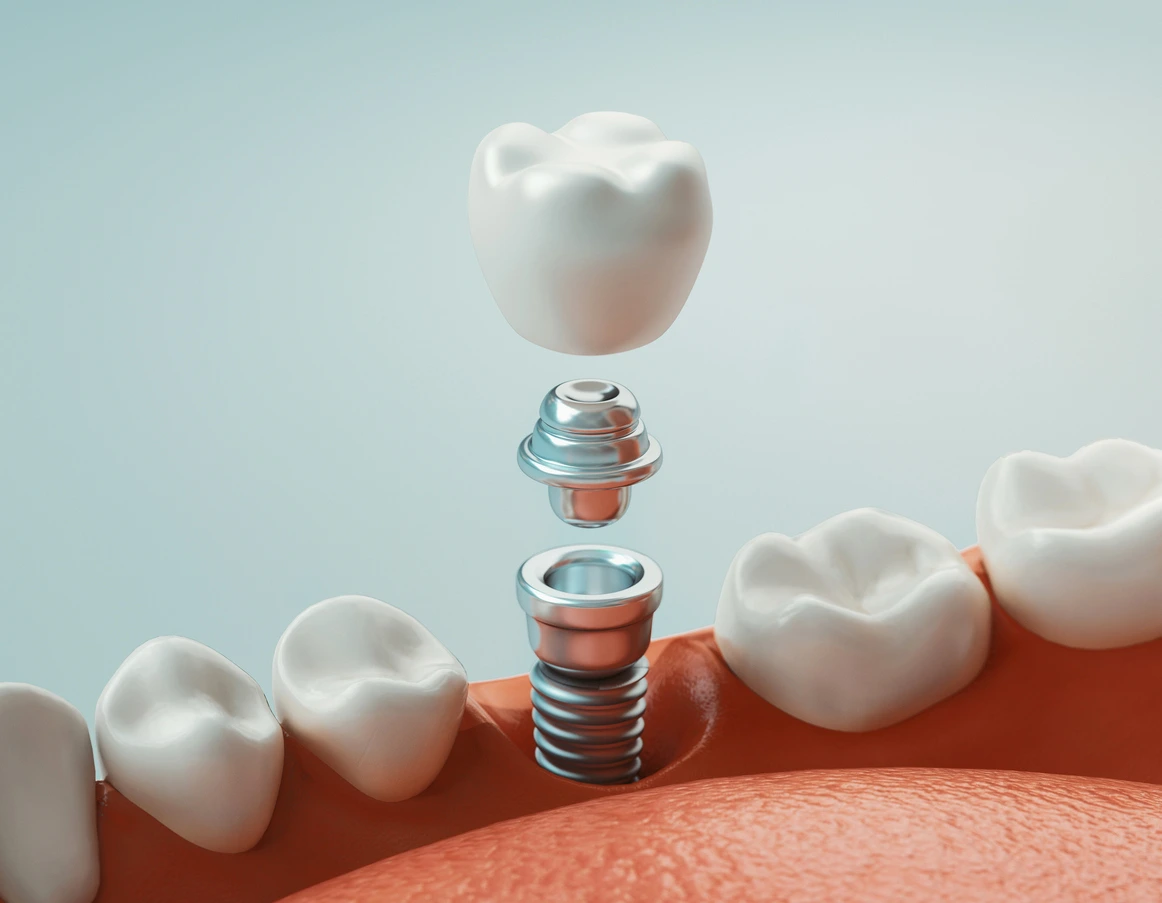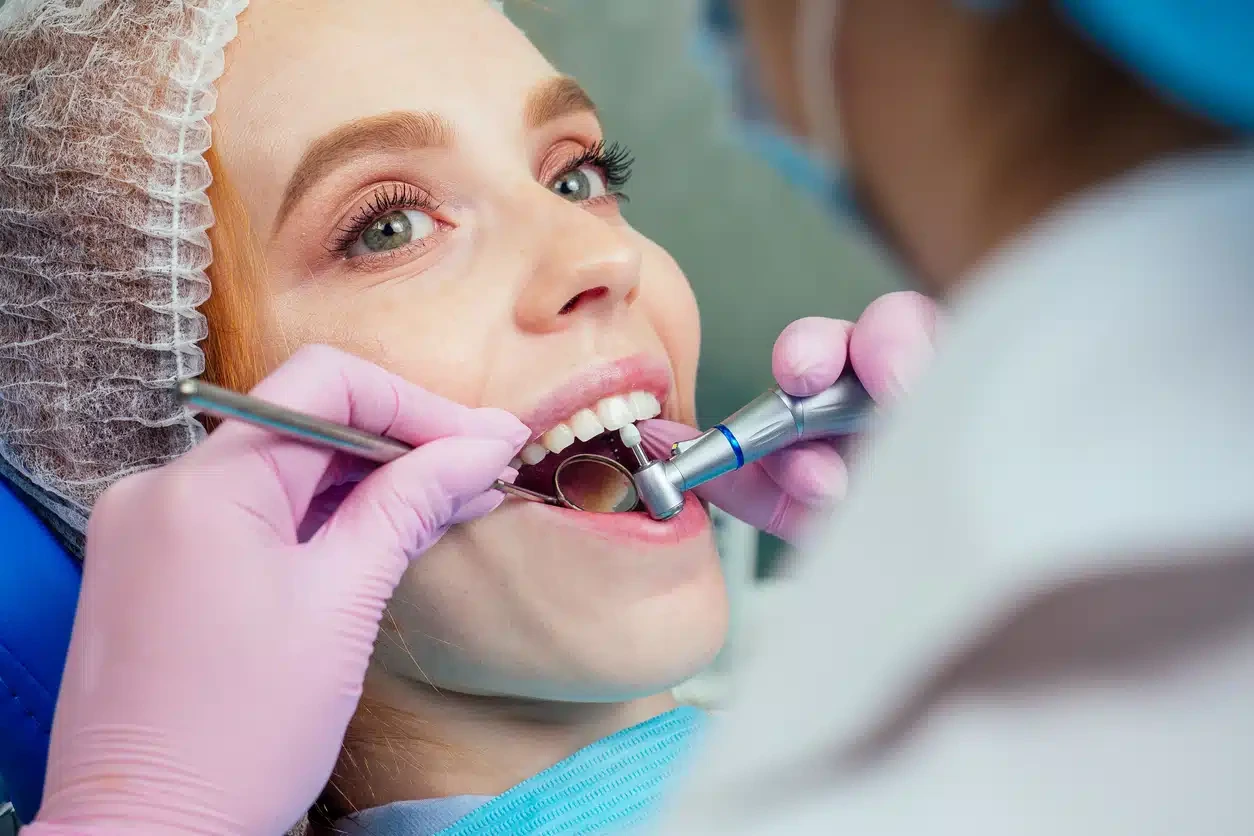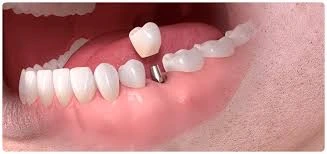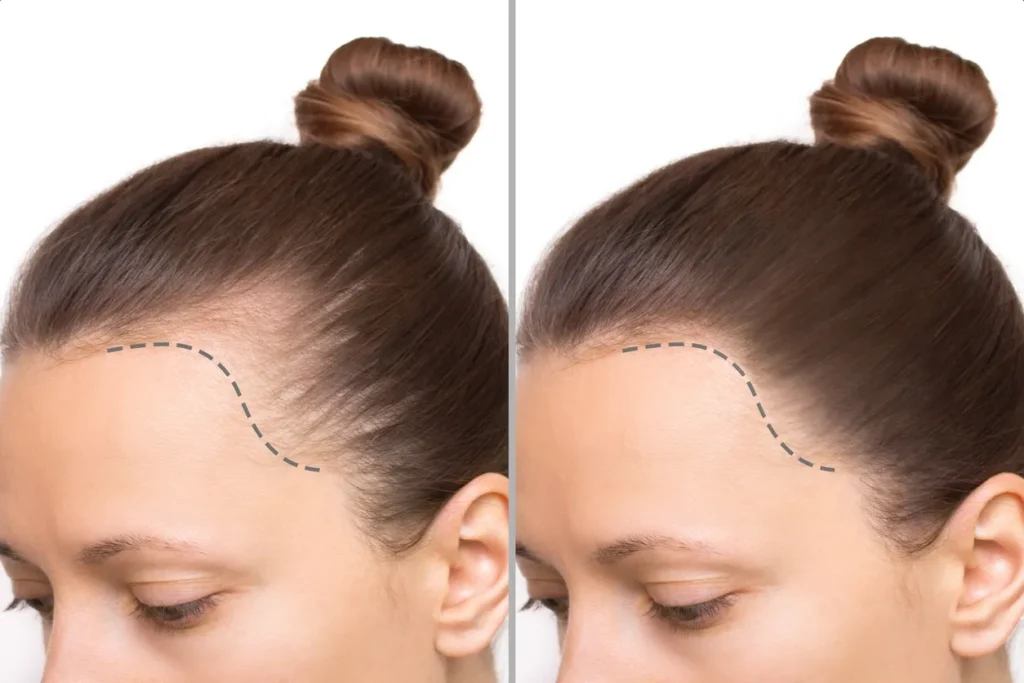What will the final result look like, and how will it affect your appearance, chewing ability, and speech compared to before treatment if you’re considering replacing your missing or damaged teeth with dental implants?
To find the answer to these questions, you need to learn more about the components of a dental implants and how they work, what their benefits and risks are, and how to care for your implants to keep them looking naturally attractive. That’s why we’ve dedicated this article to answering all of the above—so keep reading.
Components of Dental Implants
A typical dental implant consists of specific main components that work together to replace the missing natural tooth, as follows:
- Dental implant: a titanium post surgically placed into the jawbone to act as an artificial root for the missing natural tooth. It is highly biocompatible, promoting seamless integration with the bone to provide a strong, stable foundation.
- Abutment: the connector fixed atop the implant after integration, protruding above the gum line. Usually made of titanium or zirconia, it secures the crown to the implant and helps shape the gum tissue for an even appearance.
- Dental crown: the visible portion of the implant, crafted from durable materials such as zirconia or porcelain to accurately mimic the form and strength of a natural tooth. It is permanently affixed over the abutment, restoring your natural smile and chewing function smoothly.
- Fixation screw: used to secure the abutment to the implant or the crown to the abutment. Made from titanium to resist corrosion and ensure long-term durability, it keeps all components stable under daily chewing forces.
Also read: How Long Do Dental Implants Take in Turkey

Benefits & Risks of Dental Implants
Certainly, dental implants are an advanced treatment modality with many advantages, but—like any medical procedure—they also carry certain risks that require careful attention and thorough evaluation.
Benefits of Dental Implants
- Natural look and feel: Implants are designed to look and function exactly like natural teeth, restoring both your confidence and comfort.
- Preserves jawbone structure: The implant stimulates the bone and prevents the bone loss that typically follows tooth extraction, helping maintain your facial contours.
- Long-term solution: With proper care, implants can last a lifetime, making them an ideal long-range investment.
- Doesn’t affect adjacent teeth: Because each implant is placed independently, there’s no need to grind down or support next to healthy teeth, as is required with traditional bridges.
- Enhanced chewing and speech: Implants provide a solid foundation for prosthetic teeth, allowing you to chew efficiently and speak clearly without worry.
- Boosted confidence and comfort: Regaining a full smile and the ability to eat and speak freely improves your self-image and social ease.
- Easy hygiene: You can brush and floss implants just like natural teeth, simplifying daily oral care.
Risks of Dental Implants
- Surgical-site infection: Infection can occur around the implant, sometimes requiring antibiotics—or, in rare cases, removal of the implant.
- Nerve or adjacent-structure damage: There is a small risk of nerve injury causing numbness or inadvertent damage to neighboring teeth or sinus cavities during placement.
- Failure to osseointegrate: Occasionally, an implant may not properly fuse with the surrounding bone, leading to instability and the need for removal and re-evaluation.
- Peri-implantitis: Inflammation of the gum and bone around the implant can cause supporting bone loss and eventual implant failure if not treated.
- Need for additional procedures: Some patients require bone grafting to provide sufficient support for the implant, which adds complexity and lengthens healing time.
- Sinus complications: In the upper jaw, an implant may encroach on the sinus cavity if there isn’t enough bone, potentially causing sinusitis.
- Early healing complications: Swelling, bruising, or prolonged pain can occur in the immediate postoperative period, and—rarely—severe bleeding or delayed wound healing.
At Prof Clinic in Turkey, we prioritize making your dental implant journey as safe as possible. Our skilled specialists and cutting-edge technologies work together to minimize these risks. Contact our team via WhatsApp today to book your free consultation.
Also read: Dangers of Dental Crowns: What You Need to Know

Do Dental Implants Look Natural?
Dental implants can look incredibly natural when placed carefully by a skilled clinician using high-quality materials.
Below are the key factors that make them appear natural:
- Shape and color: The implanted teeth are designed to match the shape, size, and shade of your adjacent natural teeth. Shades are selected precisely to blend seamlessly with your smile.
- Materials used: Crowns are often made of ceramic or zirconia—materials that mimic the appearance of natural enamel. This gives them a luster and translucency similar to original teeth.
- Stability and fit: Implants are anchored into the jawbone to provide stability akin to natural roots, ensuring both a natural appearance and function.
- Gum integration: The gum tissue around the implant is sculpted to harmonize with neighboring teeth. Proper gum care prevents any noticeable discrepancies.
- Customized design: Digital techniques are used to design implants that complement your facial features, ensuring a harmonious, natural-looking smile.
With Prof Clinic, you won’t notice a difference—your new dental implants will look so natural, as if they were always yours. Our team is ready to answer your questions and connect with you.
Tips for Caring for Dental Implants
Proper care protects the implant and the surrounding tissues from potential problems. Here are the best ways to look after your dental implants:
- Keep up daily hygiene: Brush your teeth twice a day with a soft-bristled toothbrush, and use dental floss or an interdental brush to clean around the implant.
- Avoid hard foods: Steer clear of chewing very hard items—like ice or hard candies—and stick to soft foods during the first few weeks after implant placement.
- Regular checkups: See your dentist every six months to have your implant examined and ensure it remains healthy. Routine visits help you catch any issues early.
- Quit smoking: Smoking delays healing and raises the risk of implant failure. Talk to your dentist about support programs to help you stop smoking.
- Use mouthwash: Rinse with an antibacterial, alcohol-free mouthwash to reduce inflammation around the implant without irritating your gums.

Why Choose Prof Clinic for Your Dental Implants?
Prof Clinic is a leading name in dental implantology in Turkey. Thanks to our high-quality services and use of the latest technologies, we guarantee you a comfortable experience and reliable results through:
- Expert clinical team: Prof Clinic’s implantologists possess exceptional skills and extensive experience in dental implant surgery. They employ precision techniques to ensure procedural success.
- Advanced technology: We utilize 3-D imaging and digital planning systems to pinpoint implant sites with accuracy. This reduces risks and enhances outcomes.
- Comprehensive care: We provide post-implant follow-up to ensure complete healing, including daily care guidance and regular check-ups.
- Comfortable environment: We offer a relaxing atmosphere with effective anesthesia to minimize discomfort during the procedure. Our self-booking service makes scheduling easy.
- Flexible hours: Our clinic is open daily from 8 AM to 10 PM, giving you multiple appointment options.
Dental implants before and after
Before receiving dental implants, you may face significant challenges such as difficulty eating, unclear pronunciation of certain words, and negative effects on your facial appearance.
After a successful implant procedure and placement of fixed prosthetic teeth, you’ll fully regain your ability to chew and speak naturally and comfortably while restoring an attractive, confidence-boosting smile.

FAQs about Dental Implants
How should a dental implant look?
An implant should blend naturally and harmoniously with your gum line and adjacent teeth, making it hard to distinguish from the originals. The crown (the visible portion) must match the color and contour of your other teeth to give your smile a natural, attractive appearance.
How do implants look in your mouth?
Once treatment is complete, the only visible part of the implant in your mouth is the artificial crown, which mimics a natural tooth and emerges above the gum line. The implant itself (the artificial root) is fully buried in the jawbone and invisible, and the abutment connecting the crown to the implant is typically covered by the crown.
Do dental implants look like real teeth?
Yes. Dental implants are designed to look and function as closely as possible to natural teeth in shape, color, and size. The goal is to achieve a seamless aesthetic and functional integration with your remaining natural teeth.
Can I get an implant 2 years after extraction?
Absolutely. In most cases, you can receive an implant even two years—or longer—after the tooth has been removed. However, as time passes you may lose some jawbone volume and density at the extraction site, which might necessitate a bone graft before implant placement to ensure a suitable foundation.
Do you get temporary teeth while waiting for implants?
You will usually receive temporary teeth after implant placement and before the final crowns are fitted, especially if the implant is in a visible area. These temporaries help maintain your appearance and allow partial chewing and speech during the healing and osseointegration period.
Can full mouth implants be done in one day?
Yes, through “same-day implants” or All-on-4/All-on-6 techniques, full mouth implants can be placed in a single day. Temporary teeth are fixed immediately after implant surgery, with permanent teeth added a few months later after healing.
Is it a good idea to get dental implants in Turkey?
Yes, if you choose a reputable clinic, like Prof Clinic. Turkey offers advanced implant systems, experienced surgeons, and comprehensive packages at much lower costs than in the UK/US. Quality and safety are high when you verify credentials, reviews, and materials used.
How painful are full dental implants?
The procedure itself is painless thanks to local anesthesia or sedation. Post-op discomfort is normal—like swelling or soreness—but is typically mild to moderate and controlled with painkillers. Most patients report recovery is easier than expected.




